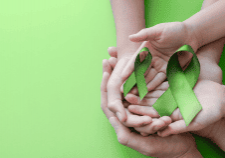March is recognized as Self-Harm Awareness Month, a time to increase understanding and awareness of the issue of self-harm, also known as Non-Suicidal Self-Injury (NSSI). The more you know about self-harming behaviors, the more you can help yourself or be of help to someone in need.
What is Self-Harm?
Self-harm is a behavior that involves intentionally causing physical harm to oneself without suicidal intent. It is a serious mental health concern that affects people of all ages and backgrounds. Research shows that up to one in five young people engage in self-harm at some point in their lives. Studies suggest that self-harm is more common among females than males. While self-harm can occur at any age, it is most common in adolescents and young adults.
Self-harming behavior serves as a coping mechanism for emotional struggles. When people do not have healthy coping skills or the resources needed to develop them, they may become overwhelmed by stress and negative emotions. Self-injury is commonly defined as the transfer from emotional pain to physical pain.
Some common forms of self-harming behaviors include:
- Cutting
- Burning
- Hair pulling
- Headbanging
- Hitting
- Skin picking
The goal of self-harm is to inflict pain on oneself, but it is not intended as a suicide attempt. The person is trying to control where their pain comes from rather than ending their life.
Causes and Risk Factors
Self-harm is a complex behavior that can be caused by a variety of factors, including psychological, social, and biological factors. People who practice self-harm often report feeling overwhelmed, hopeless, or powerless. They may use self-harm as a coping mechanism to deal with difficult emotions or situations. Some risk factors for self-harm include a history of trauma or abuse, mental health disorders such as depression or anxiety, substance abuse, and poor social support.
Ways to Show Support
If someone you know is practicing self-harm, it can be challenging to know how to help them. Here are three ways you can show your support:
- Be there to listen and offer empathy. People who practice self-harm may feel ashamed or embarrassed about their behavior. They may also feel like no one understands them. By listening without judgment and offering empathy, you can help the person feel heard and validated. You can also ask them how they would like to be supported, which can help them feel empowered and in control.
- Encourage them to seek professional help. Self-harm is a serious mental health concern that requires professional support. Encouraging the person to seek help from a mental health professional, such as a therapist or psychiatrist, can be an essential step in their recovery. You can offer to help them find a professional, make an appointment, or accompany them to their first session.
- Educate yourself. Learning about self-harm can help you better understand the behavior and how to support the person. You can read books or articles about self-harm, attend support groups, or speak with mental health professionals to learn more. It is important to approach the topic with an open mind and a willingness to learn.
Self-harm is a serious mental health concern that requires understanding, compassion, and support. By increasing awareness and education about self-harm, we can help reduce the stigma and provide better support for those who are suffering. Don’t underestimate that your support can change someone’s life.By listening, offering empathy, and encouraging professional help, you can help a loved one who is suffering on their journey to recovery.
When to Seek Help
At Integrative Counseling Services, we believe recovery from self-harm is possible. If you or someone you know is practicing self-harm, we are here to help! Contact us online or call our main office at 570-955-5479 to learn how our services can make a difference.



